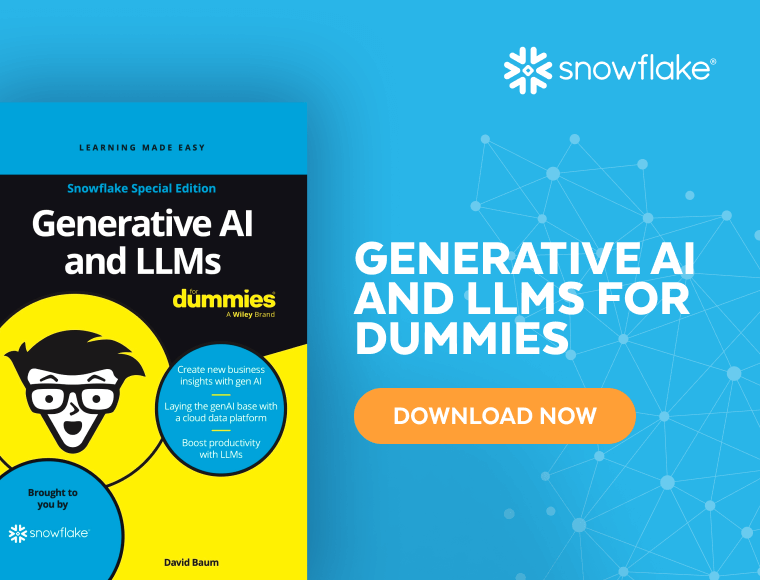AI Observability: Bringing Trust and Reliability to Enterprise-Grade AI
The complexity of AI systems makes it challenging to understand their behavior, performance and resource consumption. AI observability shines a light into the black box of AI models, helping operators and developers improve reliability, security and transparency. In this article, we’ll explain what AI observability is and why it's crucial for enterprises implementing generative AI (gen AI) at an organizational scale. We’ll also share key metrics developers and operators can use to detect anomalies, identify issues and maintain control over AI systems.
What Is AI Observability?
AI observability untangles the complexity of AI models, providing greater transparency into how they behave, the underlying data used to make their predictions, and their overall performance and security. By collecting and analyzing model-specific data, enterprises can reduce hallucination in AI outputs, establish trust, mitigate risks and harness the full potential of artificial intelligence in a safe, responsible manner.
AI observability is related to machine learning (ML) model monitoring, but it differs in some significant ways. ML monitoring is focused on ML model performance that primarily addresses things like what happened and what went wrong in terms of a specific incident. This approach is best suited to correcting issues after they’ve occurred. AI observability, on the other hand, equates to broader real-time proactive monitoring; it seeks to answer the how and why questions that help prevent failures before they happen.
Why AI Observability?
AI observability is an indispensable part of the responsible development and deployment of AI systems. The actionable insights this practice uncovers allow organizations to ensure their models are fit-for-purpose, resource-optimized and operating in alignment with organizational values.
Supports responsible and trustworthy AI
AI observability provides clarity into the behavior of AI systems, providing organizations with an in-depth understanding of how and why their AI models make decisions. The growing role of AI in decision-making processes makes it critical to accurately assess and mitigate the potential risks, biases and negative consequences that can result when AI systems don’t perform as intended.
Allows proactive performance monitoring
Actively tracking model performance metrics such as accuracy, precision and recall makes it possible — early on — to detect and address performance issues such as model drift or performance degradation. AI observability removes the opacity surrounding AI systems, accelerating debugging, root-cause analysis and other system troubleshooting efforts.
Improves model governance and compliance
Along with the promise of faster, more intelligent decisions, AI technologies have introduced a number of security, privacy, regulatory and ethical risks. AI observability supports model transparency, allowing organizations to track the flow of data as it moves through a system and explain how that data was used to make predictions. Robust observability practices can help organizations comply with existing data privacy regulations and the EU’s new AI Act, which will require developers to demonstrate that the models they create are safe, transparent and explainable.
Promotes continuous improvement
AI observability practices generate a wealth of actionable data and insights about the performance, behavior and impacts of AI systems under real-world conditions. Developers can use this information during model updates and retraining, and when making decisions about how to design and build new models.
AI Observability Metrics
Identifying, recording and tracking key metrics is an essential part of AI observability. These measures help organizations build and maintain more reliable, performant AI solutions. Here are four categories of metrics that AI observability tracks.
Data quality
High-quality data is the primary ingredient for building AI systems that generate consistent results. The AI observability process involves monitoring multiple data quality metrics, especially data drift. This refers to the potential reduction in model accuracy that can accrue over time due to changes in a model’s feature distribution after exposure to real-world data. Other data quality metrics may include data quality scores that assess the reliability, accuracy, completeness and consistency of input data.
Model performance
Performance metrics are used to assess different aspects of a model’s outputs, ensuring the AI model is performing as expected. Classification metrics are one example. Accuracy, precision, recall and the F1-score help quantify a model's predictive performance. Another example is fairness metrics — including demographic parity, individual fairness and causal reasoning — which are used to detect and mitigate potential biases in AI systems.
System resource utilization
Highly optimized AI models are cheaper to run. For this reason, actively monitoring resource consumption is an important part of AI observability. These metrics include memory usage, latency, throughput and response time. Resource utilization metrics help developers ensure AI models are optimized to identify and resolve resource bottlenecks impacting model performance.
Explainability
Explainability metrics are used to quantify interpretability:the measure of how well the cause and effect within a model can be understood. Model size, decision-tree depth and decision-tree purity are just a few examples. Explainability supports transparency and understanding, helping organizations improve the system’s decision-making process, resolve unexpected behavior, reduce risk and ensure model predictions treat all groups equitably.
Enhance Your AI Observability with Snowflake
Snowflake provides the infrastructure and development capabilities organizations need to securely build and deploy advanced, observable generative AI systems. The Snowflake AI Data Cloud is optimized for performance at scale, allowing organizations to bring all workloads directly to their data, including AI and ML applications. Accelerate your gen AI and machine learning workflows, eliminate complexity and start gaining powerful insights from your data. Snowflake Trail offers a set of Snowflake capabilities for developers to better monitor, troubleshoot, debug and take actions on pipelines, apps, user code and compute utilizations.
View recordings from the Data Cloud Summit 2024, Snowflake's Apps and AI Summit, to learn about AI-based observability and alerting with Snowflake and PagerDuty.
